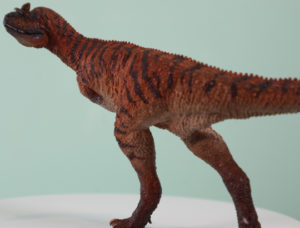Dinosaur Tracks in Danger of Becoming Extinct
Cal Orck’o Dinosaur Tracks Threatened
To the north-east of the city of Sucre in central Bolivia lies one of the most remarkable fossil sites anywhere in the world. The Huellas de Dinosaurio de Cal Orck´o which translates as the “dinosaur footprints on the lime hill”. For here, preserved on a sheer slope, are the fossilised tracks of dinosaurs, more than 5,000 individual prints, in excess of 350 trackways providing a spectacular trace fossil record of life in the Late Cretaceous some 68 million years ago. However, extraction of material to support the local cement works could be endangering the entire site according to local conservationists.
Dinosaur Tracks
Although less famous than the Lark Quarry site (Australia) and the Sauropoda tracks found in Gansu Province (China), the Bolivian site represents one of the biggest, if not the biggest collection of dinosaur footprints discovered to date. At least eight types of dinosaur trackways have been identified. There are the huge footprints of gigantic titanosaurs, tracks made by some of the largest land animals that ever existed. Many of the individual prints measure more than 100 centimetres in diameter and indicate dinosaurs around twenty metres or more in length.
Ornithopods and Ankylosaurids
There are also tracks of ornithopods and ankylosaurids. Meat-eaters are represented too, the largest three-toed tracks identified as having been made by theropod dinosaurs most probably represent tracks made by abelisaurids, the nearby Parque Cretácico (Cretaceous Park) contains a number of life-size, colourful replicas of the dinosaurs that once roamed this part of Gondwanaland.
Photograph of a Typical Late Cretaceous Abelisaurid (Carnotaurus)

The PNSO Carnotaurus model stands perfectly stable without the use of the transparent stand which is supplied with the figure. However, Everything Dinosaur recommends that the support stand is used when the model is put on display.
Picture credit: Everything Dinosaur
For dinosaur models and figures: PNSO Museum Quality Age of Dinosaurs Figures.
The park and viewing platforms were opened in 2006, a collaboration between a number of scientific institutions including the Natural History Museum of Basel (Switzerland) whose research teams did much to document and map the tracks between 1998 and 2003, with the support of the Bolivian Government. Fossilised tracks had been found by cement industry workers and quarry men for many years before the discovery in 1994 of the extensive trackways. The cliff site and the nearby Cretaceous Park attract in the region of 120,000 tourists each year.
Cement Factory Nearby
However, the nearby cement factory could be endangering the fossilised footprints as the quarrying of limestone takes place nearby. The quarry work and frequent dynamiting of rock faces to expose new material could be undermining the entire site and making the sixty-eight-million-year-old fossils in danger of collapse.
Elizabeth Baldivieso, the administrator of Parque Cretácico stated:
“The cliff has been quite affected by the many years of extraction of raw material.”
The regional Tourism and Cultural Secretary, Juan Jose Padilla disagrees, referring to Elizabeth Baldivieso’s description as “somewhat alarmist”. The cement company, Fancesa jointly owned by a local university, the city and regional administrators has vowed to protect the site.
The dinosaur tracks appear to indicate that these ancient creatures were climbing an almost sheer vertical cliff face. However, back some 68 million years ago, the landscape was flat and muddy. Over time plate movements pushed up the floodplain creating the near vertical trackways which stretch for around fifteen hundred metres or so.
Proposed UNESCO World Heritage Site
This location was proposed as a UNESCO World Heritage site in 2009, but the cement company opposed the application and it was eventually turned down. Campaigners are hoping to re-apply for UNESCO World Heritage status in 2015. This would provide much greater protection to the fossil trackways and we at Everything Dinosaur wish the Bolivian Government and conservationists every success with the re-submission.
To read an article written by Everything Dinosaur about the discovery of some Early Cretaceous dinosaur footprints in Bolivia: Farmer Describes Dinosaur Tracks to Scientists.

